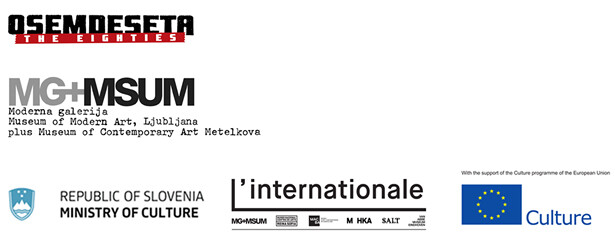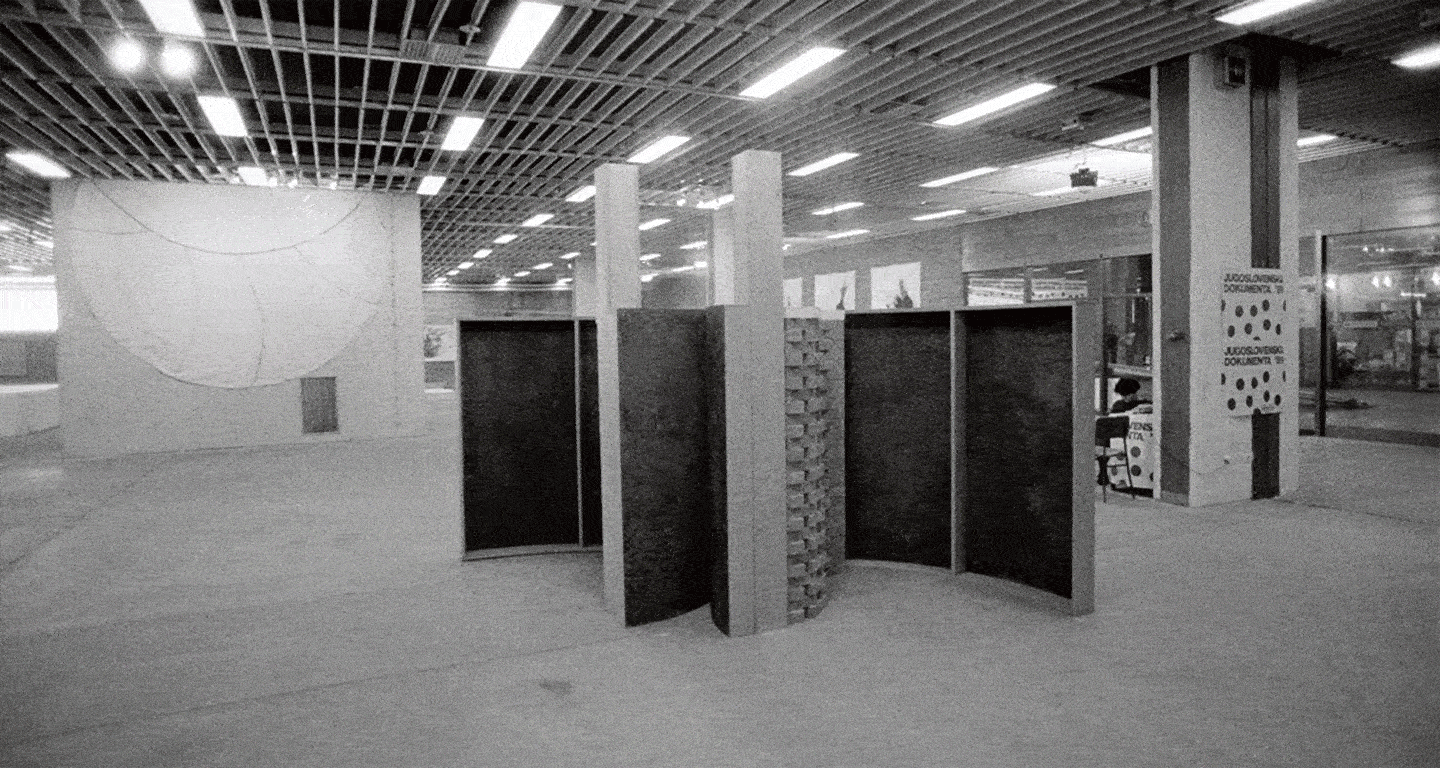Case Study: The Second Yugoslav Documents Exhibition
April 26–September 17, 2017
Cankarjeva cesta 15
SI- 1000 Ljubljana
Slovenia
Hours: Tuesday–Sunday 10am–6pm
T +386 1 241 68 00
info@mg-lj.si
Exhibition curators: Zdenka Badovinac, Bojana Piškur
The Heritage of 1989 is a re-enactment of the last big Yugoslav exhibition named Yugoslav Documents ‘89, curated by artists Jusuf Hadžifejzović and Rade Tadić and held at the 8000-square-meter Skenderija Olympic Complex in Sarajevo in 1989, under the patronage of the 1984 Winter Olympics organising committee.
This project is by no means an attempt at a reconstruction of the Sarajevo exhibition, which was “only” of interest to us as a model case and as the largest of those exhibitions whose titles started with the word “Yugoslav” and which collectively aimed at shaping a common cultural space. The point of this endeavour was not so much producing shared characteristics of Yugoslav art as strengthening the idea of commons, in this case best described as the idea of brotherhood and unity. The various exhibitions designated as exhibitions of Yugoslav art were politically motivated, affirming the ideology of the commons and often concealing various ever-present antagonisms. Thus, the commons in question, which we have attempted to reactivate as our common heritage, emerged through the differences between the ideology of the commons and its critique, between the official and unofficial commons, between the planned and self-organised interactions of Yugoslav citizens.
The exhibition The Heritage of 1989 explores the commons via various antagonisms pertaining not just to subject-matter but also to the human capacity of producing something together. In this day and age, which has done away with citizens of Yugoslavia and is dominated by collective ethnic identities on the one hand and individualism on the other, the exhibition re-examines such a commons in the current circumstances. For this reason, The Heritage of 1989 does not only present 1980s art but also suggests a different notion of heritage, opening up the space of the commons in emergence. The preservation of heritage is understood primarily as its continued use. In our case, this includes: A) the presentation of art from the Sarajevo Documents ‘89 as well as of contemporary pieces relating to the issue of refugees; B) a discussion of the social and political context (absent from the Sarajevo Documents ‘89) contributed by Tomaž Mastnak; C) an art installation by Azra Akšamija offering a visual presentation of the history of institutions of the commons in Sarajevo, D) the commons emerging in a series of workshops / discussion interventions conceived by BADco; E) various activities with the participation of refugees, both from ex-Yugoslavia and recent arrivals to Slovenia, predominantly from the Middle East, and F) a display of the archives created in the process of preparing The Heritage of 1989, which will be shown at the Skenderija complex in Sarajevo at the end of the year.
This exhibition forms part of an extensive project entitled THE EIGHTIES, which constitutes part of the five-year program The Uses of Art—the Legacy of 1848 and 1989, organized by the museum confederation L’Internationale.
The other exhibition related to this project is Multimedia Practices and Venues of Production, currently on view at the Museum of Contemporary Art Metelkova.The exhibition shows how expanded the field of art was in the 1980s, with practices characterized by multimedia, self-organization, interdisciplinarity, trans-generational work, and collective authorship. The display concept foregrounds the typical venues and events, putting additional emphasis on selected artistic installations. The multimedia theme is approached from two curatorial angles: via the alternative and/or subculture venues and via the institutionally and technologically supported practices. Together they reveal a media field constituted by the interrelations between production and presentation, concept and context, television and video.
In presenting the venues, their key attributes are highlighted, derived from individuals or society: their specific aesthetics, narratives, forms and contents, and the modes, relations, means, and conditions of production. Although based on actual spaces and activities, they are described with generic names reflecting the most important practices: disco, gallery, studio, festival, other television, viewing room, reading room, cinema, and exit. To illustrate the synergy between different practices, the venues feature projects and documents. A selection of reconstructed installations is included as a constitutive part of multimedia venues. The exhibition curators are Barbara Borčić and Igor Španjol.



